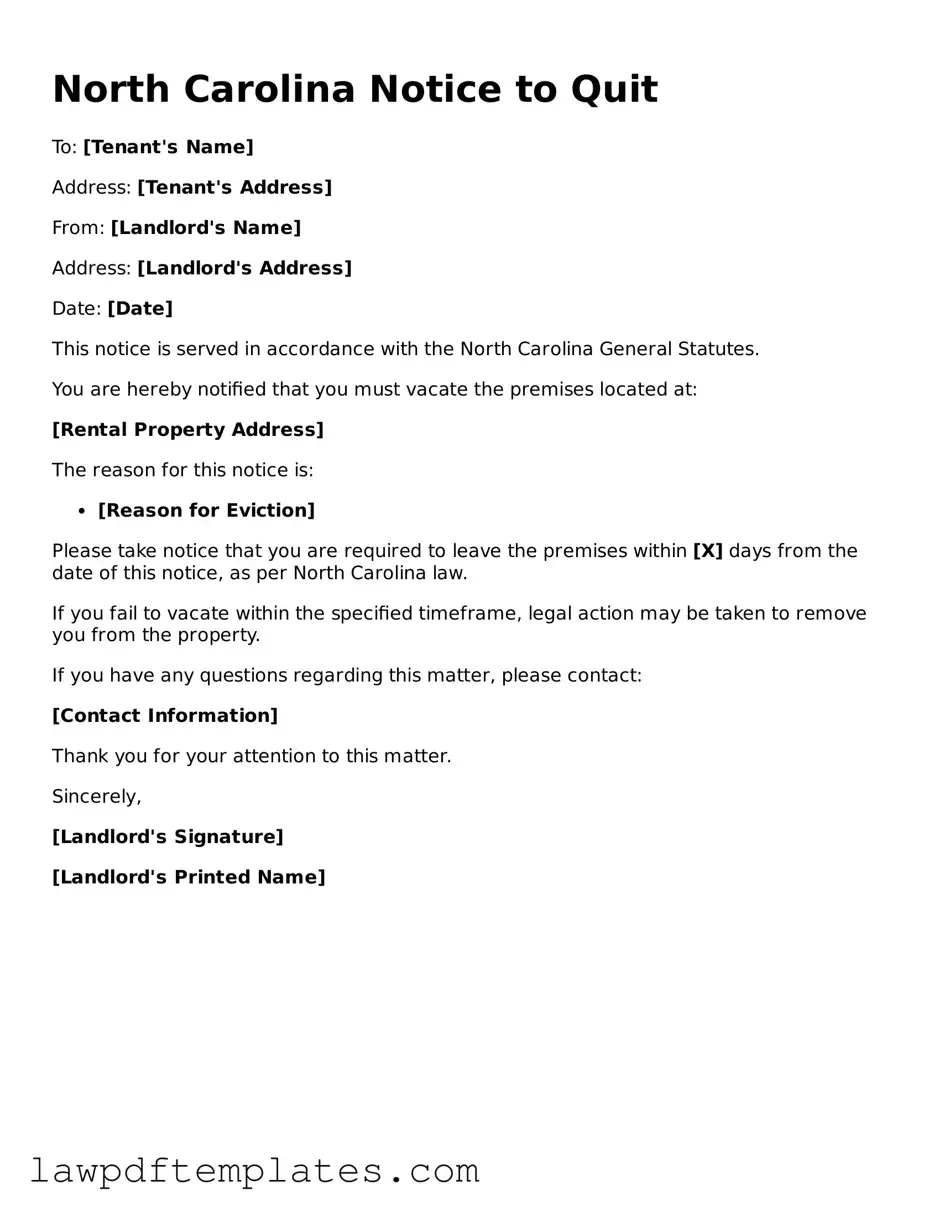Free Notice to Quit Template for the State of North Carolina
The North Carolina Notice to Quit form is a legal document that landlords use to inform tenants of their intention to terminate a lease agreement. This form outlines the reasons for eviction and provides tenants with a specified time frame to vacate the premises. If you need to fill out this form, click the button below to get started.
Get My Notice to Quit
